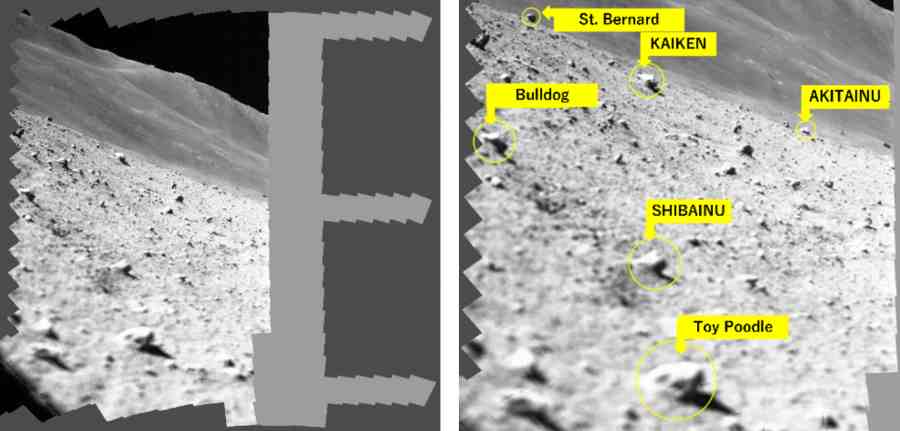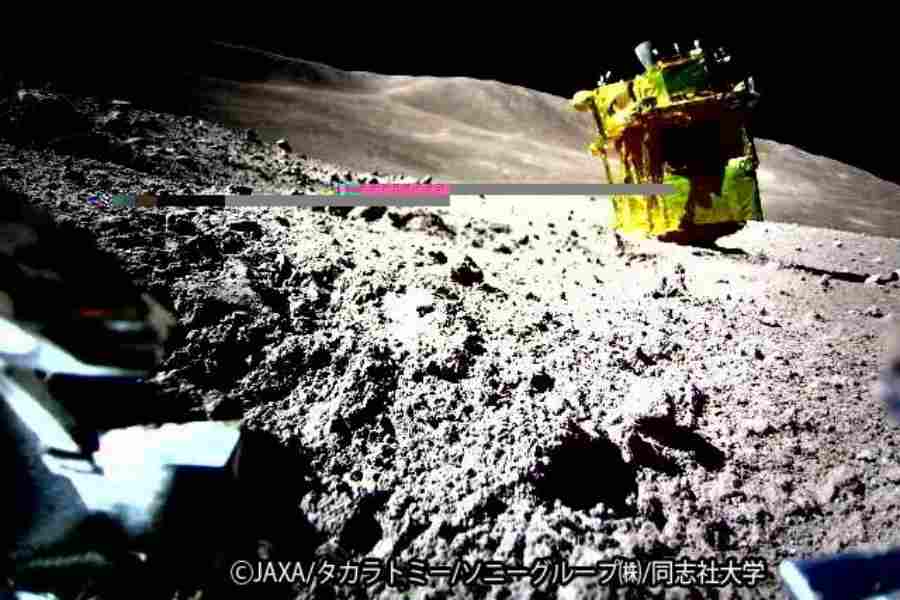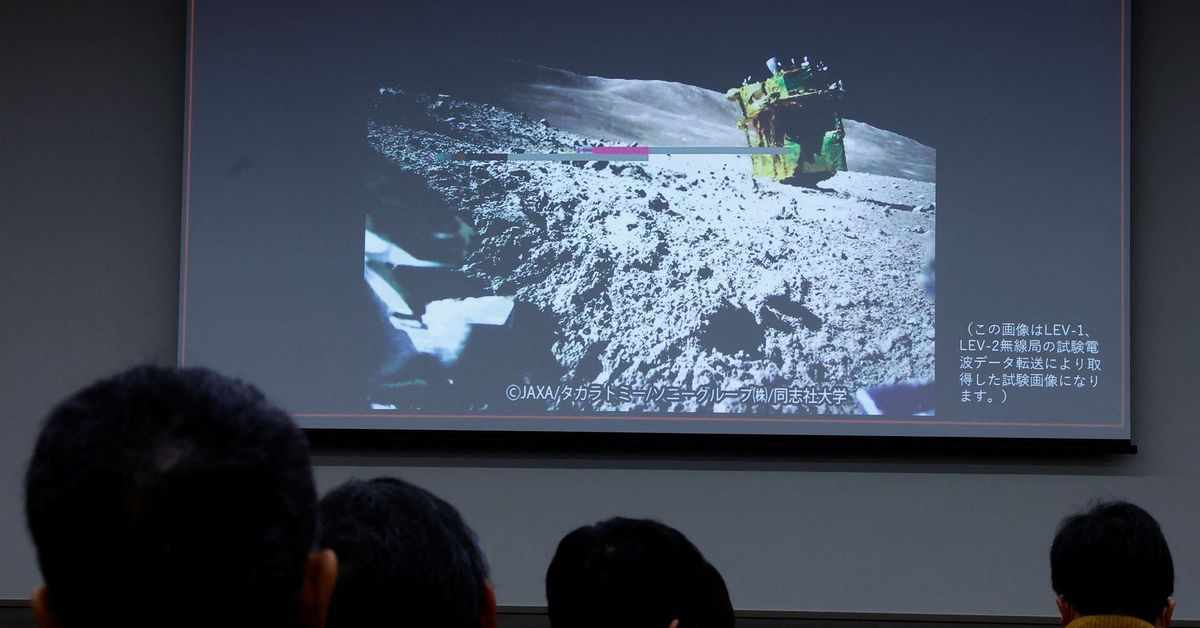![]() A handout picture of SLIM on the moon [Japan Aerospace Exploration Agency (JAXA)/Takara Tomy/Sony Group/Doshisha University/Reuters]
A handout picture of SLIM on the moon [Japan Aerospace Exploration Agency (JAXA)/Takara Tomy/Sony Group/Doshisha University/Reuters]
Thu 25 January 2024:
Japan’s space agency has claimed that it successfully completed an unusually precise lunar landing just metres from its objective.
On Saturday, Japan became the fifth nation to land a spacecraft on the moon when its so-called “Moon Sniper” lander touched down.
On Thursday, the Japan Aerospace Exploration Agency [JAXA] said it had received all data about the landing of its Smart Lander for Investigating Moon (SLIM) probe within 2 hours and 37 minutes after the touchdown.
“We need a more detailed analysis of the data, but the accuracy of the ‘pinpoint’ landing was probably 3 metres to 4 metres [10 to 13 feet],” the lander’s project manager, Shinichiro Sakai, told a news conference.
The mission aimed to land within 100 metres (328 feet) of its target, bettering the conventional accuracy figure of several kilometres. The target was a crater where the moon’s mantle, a deep inner layer, is believed to be exposed on the surface.
JAXA also published its first colour images from the mission depicting the aircraft sitting at a slight angle on the moon’s rocky grey surface, with rising slopes in the distance.
One of the lander’s two main engines most likely stopped in the final phase of touchdown, leaving it in the angled position, Sakai said.
Despite the success, the mission was not without any issues.
JAXA said saying SLIM’s solar panels have been unable to generate electricity likely because they were angled wrong, expressing hope that a change in the sunlight’s direction could power it up again.
The agency had shut off its probe three hours after it landed to allow for a possible recovery of the craft. Before switching SLIM off, it was able to download technical and image data from the craft’s descent and the lunar surface.

Figure 1:A lunar surface scan mosaic image captured by the SLIM-mounted MBC (left) and its enlarged view (right). (Credit: JAXA, RITSUMEIKAN UNIVERSITY, THE UNIVERSITY OF AIZU) The grey area on the right of the mosaic lacks data due to the discontinuation of scanning operation.
JAXA hopes to learn more about the moon’s possible water resources through “vision-based navigation”, instrumental in building a base there one day as possible stopovers on the way to Mars.
Japan follows the United States, Russia, China and India in reaching the moon.
SOURCE: INDEPENDENT PRESS AND NEWS AGENCIES
______________________________________________________________
FOLLOW INDEPENDENT PRESS:
WhatsApp CHANNEL
https://whatsapp.com/channel/0029VaAtNxX8fewmiFmN7N22
![]()
TWITTER (CLICK HERE)
https://twitter.com/IpIndependent
FACEBOOK (CLICK HERE)
https://web.facebook.com/ipindependent
Think your friends would be interested? Share this story!






